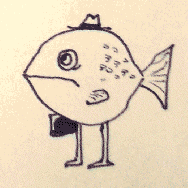What are mermaids doing to prepare for the future? What are merchildren learning in schools to help make them competitive in the job market? Is the next generation of mermaids and merlads being trained to face the challenges of a changing mersociety?
It's hard enough trying to conduct chemistry labs underwater – merstudents haven't had as much exposure to hydrochloric acid as you or me, let me tell you. On the other hand, they probably have a good foundation in hydrodynamics. Motivated biologist mers have stations at coral reefs for sure, and I bet they can extend their knowledge of physics down in deep-sea thermal vents (even if the mermaids you find there are really weird).
Can you imagine how weird a deep-sea mermaid is? I don't need to imagine – they're really weird. They hang out with octopuses, first of all. Some of them are really hairy, to deal with the extreme cold and low oxygen levels (they trap oxygen in their hairs – THEY'RE SO WEIRD). Other are completely bald, all over their bodies. I think that's more an environmental effect than a genetic one – extreme temperatures must have singed off their hairs.
Can things singe underwater? Maybe the hairs just withered off.
Deep-sea mermaids aren't the creepiest mermaids, though. They're at least recognizably mermaid-like. The craziest mermaids are beyond the imagination of even other mermaids. The scariest mermaids are the ones that live in the midst of the lightless water column – they have humongous eyes and creepy bioluminescent appendages. They're probably also really tiny – the size of a grapefruit – due to high pressure and physiological demands. By that logic, the deepest deep sea mermaids are also probably supposed to be really small, but the fact is that they're mermaid giants of the deep. This doesn't mean they're actually bigger than regular mermaids, it just means that they're colossal by the standards of their region.
The middle regions of the water column are more or less the Medieval Black Wood of the mermaid imagination – it's an amorphous, threatening expanse between the recognizable regions of the known mer-world.
The known mer-world, it must be pointed out, is pretty scarce. The oceans of our planet, aside from being tremendous, are three-dimensionally inhabitable. Here, read about Pelagic Zones. Mermaids are scared of pretty much ninety-per-cent of that, even if they have little grapefruit-sized pixie mermaid cousins to hold their hand in the dark.
When that much of your environment exists as persistently unknowable, it's no surprise that you're prone to superstition. That's not all mermaids, of course – most are carefree, we're talking about the tiny fraction of the mermaid population that isn't. That small group is either devotedly superstitious, making signs against the evil eye and swallowing poisonous fish concoctions; or very scientific.
The latter group study either physics or biology, as we've already established.


No comments:
Post a Comment